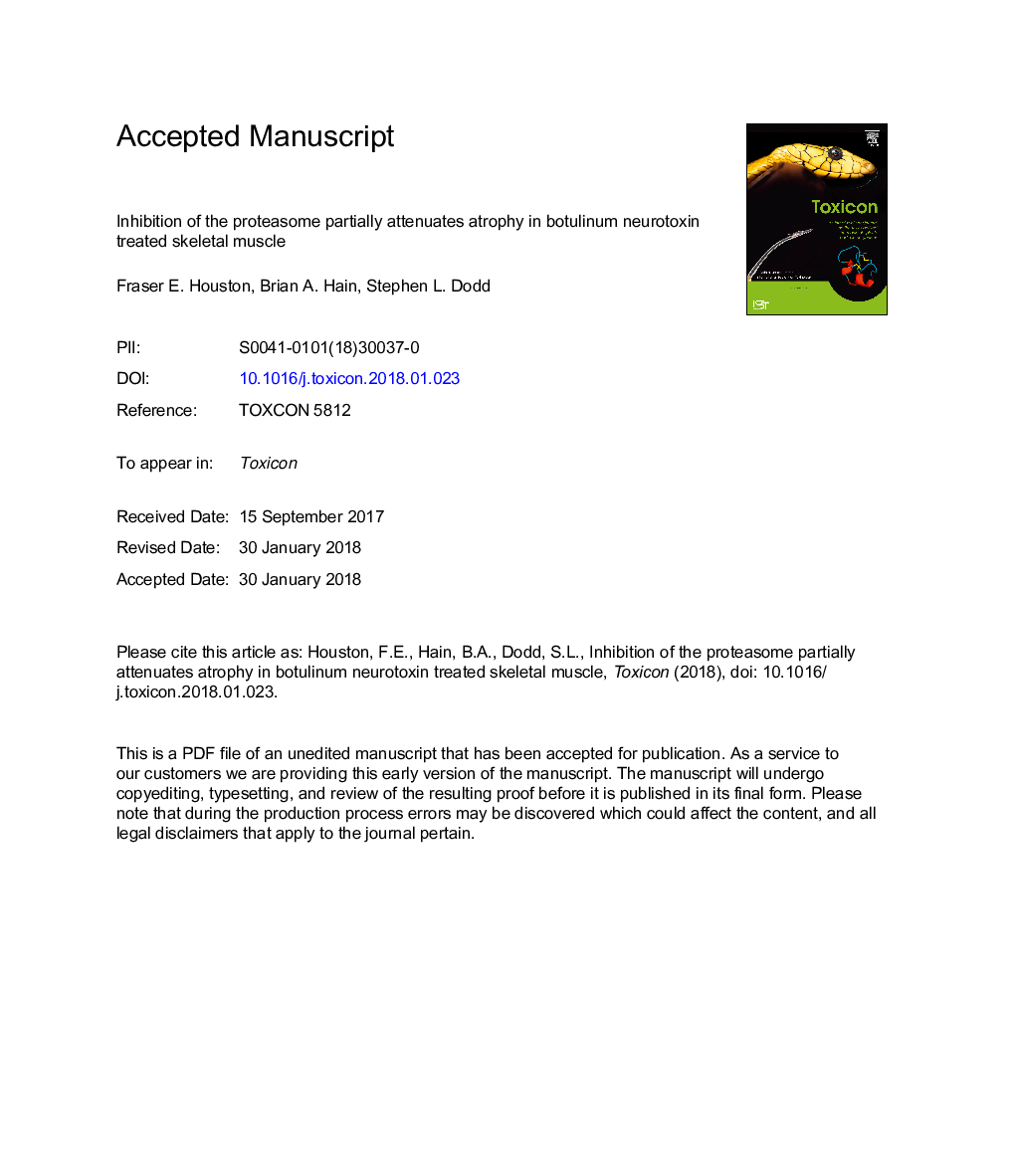| کد مقاله | کد نشریه | سال انتشار | مقاله انگلیسی | نسخه تمام متن |
|---|---|---|---|---|
| 8394671 | 1544092 | 2018 | 17 صفحه PDF | دانلود رایگان |
عنوان انگلیسی مقاله ISI
Inhibition of the proteasome partially attenuates atrophy in botulinum neurotoxin treated skeletal muscle
ترجمه فارسی عنوان
مهار پروتئازوما بخشی از آتروفی را در عضله اسکلتی تحت درمان با نوروتوکسین بوتولینوم
دانلود مقاله + سفارش ترجمه
دانلود مقاله ISI انگلیسی
رایگان برای ایرانیان
کلمات کلیدی
موضوعات مرتبط
علوم زیستی و بیوفناوری
بیوشیمی، ژنتیک و زیست شناسی مولکولی
بیوشیمی، ژنتیک و زیست شناسی مولکولی (عمومی)
چکیده انگلیسی
Botulinum neurotoxin type A (BoNT/A) is used as a therapeutic tool to induce chemical denervation of spastically contracted muscles, yet the neurotoxin can also cause skeletal muscle atrophy. The underlying proteolytic mechanisms that induce this atrophy remain unclear. Our previous work has highlighted increased ubiquitin proteasome system (UPS) activity in soleus muscle of male Sprague Dawley rats following hind limb injection of BoNT/A, with the chymotrypsin-like activity of the 20s proteasome the most active. Thus, we chose to inhibit 20s proteasome activity in BoNT/A injected hind limb to determine the effect on soleus muscle atrophy. Epoxomicin is commonly used to inhibit the proteasome in vivo, binding specifically and irreversibly to the 20s proteasome catalytic subunits. Daily subcutaneous injections of epoxomicin abolished BoNT/A-induced elevations in 20s chymotrypsin-like activity both 3 days and 10 days post BoNT/A injection. Furthermore, BoNT/A-induced elevations in polyubiquitination remained elevated in BoNT/A + epoxomicin treated muscle, presumably due to epoxomicin's inhibition of the proteasome causing a back-up of polyubiquitinated proteins. Despite inhibition of the proteasome, epoxomicin was insufficient to significantly attenuate soleus muscle fiber atrophy 3 days following BoNT/A injection however, 10 days of daily epoxomicin injection was sufficient to spare â¼20% of muscle wasting. The mechanism of the remaining 80% of BoNT/A-induced atrophy presumably occurs via mechanisms outside of the 20s proteasome.
ناشر
Database: Elsevier - ScienceDirect (ساینس دایرکت)
Journal: Toxicon - Volume 144, 15 March 2018, Pages 48-54
Journal: Toxicon - Volume 144, 15 March 2018, Pages 48-54
نویسندگان
Fraser E. Houston, Brian A. Hain, Stephen L. Dodd,
